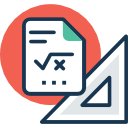
Text
Linked data for libraries, archives and museums : how to clean, link and publish your metadata
This highly practical handbook teaches you how to unlock the value of your existing metadata through cleaning, reconciliation, enrichment and linking and how to streamline the process of new metadata creation.
Libraries, archives and museums are facing up to the challenge of providing access to fast growing collections whilst managing cuts to budgets. Key to this is the creation, linking and publishing of good quality metadata as Linked Data that will allow their collections to be discovered, accessed and disseminated in a sustainable manner.
This highly practical handbook teaches you how to unlock the value of your existing metadata through cleaning, reconciliation, enrichment and linking and how to streamline the process of new metadata creation. Metadata experts Seth van Hooland and Ruben Verborgh introduce the key concepts of metadata standards and Linked Data and how they can be practically applied to existing metadata, giving readers the tools and understanding to achieve maximum results with limited resources. Readers will learn how to critically assess and use (semi-)automated methods of managing metadata through hands-on exercises within the book and on the accompanying website. Each chapter is built around a case study from institutions around the world, demonstrating how freely available tools are being successfully used in different metadata contexts.
This handbook delivers the necessary conceptual and practical understanding to empower practitioners to make the right decisions when making their organisations resources accessible on the Web
Key topics include
• The value of metadata
• Metadata creation – architecture, data models and standards
• Metadata cleaning
• Metadata reconciliation
• Metadata enrichment through Linked Data and named-entity recognition
• Importing and exporting metadata
• Ensuring a sustainable publishing model
Readership: This will be an invaluable guide for metadata practitioners and researchers within all cultural heritage contexts, from library cataloguers and archivists to museum curatorial staff. It will also be of interest to students and academics within information science and digital humanities fields. IT managers with responsibility for information systems, as well as strategy heads and budget holders, at cultural heritage organisations, will find this a valuable decision-making aid.
Ketersediaan
| 183000799 | U 025.0427 HOO l | Perpustakaan Pusat UIN | Tersedia |
Informasi Detail
- Judul Seri
-
-
- No. Panggil
-
U 025.0427 HOO l
- Penerbit
- London : Facet Publishing., 2014
- Deskripsi Fisik
-
xvii, 254 pages ; 24 cm
- Bahasa
-
English
- ISBN/ISSN
-
9781856049641
- Klasifikasi
-
025.0427
- Tipe Isi
-
-
- Tipe Media
-
-
- Tipe Pembawa
-
-
- Tahun
-
2014
- Edisi
-
-
- Subjek
- Info Detail Spesifik
-
-
- Pernyataan Tanggungjawab
-
-
Versi lain/terkait
Tidak tersedia versi lain
Lampiran Berkas
URl Source
Komentar
Anda harus login sebelum memberikan komentar
 Karya Umum
Karya Umum  Filsafat
Filsafat  Agama
Agama  Ilmu-ilmu Sosial
Ilmu-ilmu Sosial  Bahasa
Bahasa  Ilmu-ilmu Murni
Ilmu-ilmu Murni  Ilmu-ilmu Terapan
Ilmu-ilmu Terapan  Kesenian, Hiburan, dan Olahraga
Kesenian, Hiburan, dan Olahraga  Kesusastraan
Kesusastraan  Geografi dan Sejarah
Geografi dan Sejarah